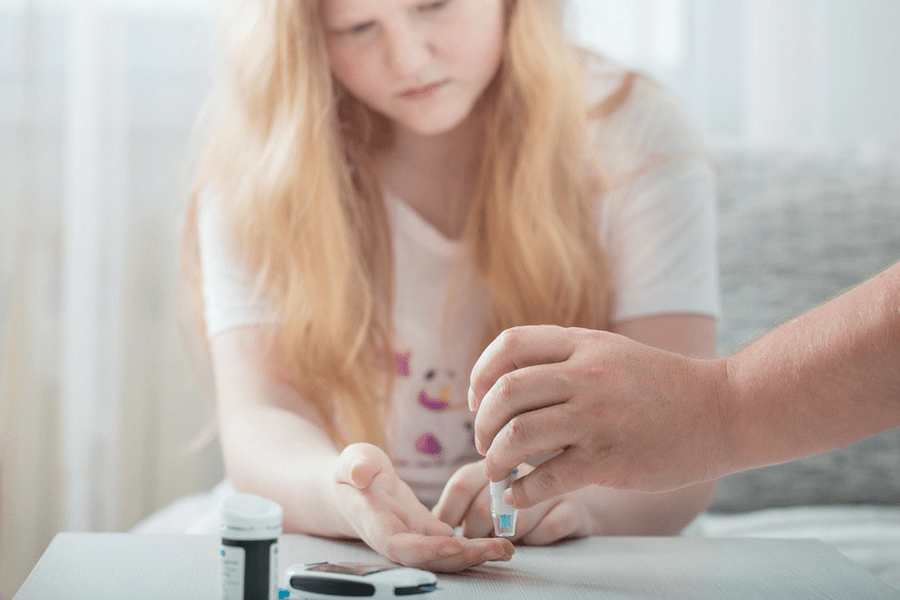Communication is key for us all. It enables growth, self-confidence and drives our ability to live an enriched life. As teens transition from childhood to adulthood it can sometimes be difficult to maintain open lines of communication. But when a teen is living with a chronic disease, such as type 1 diabetes, it becomes critical to keeping them healthy.
Many teens with type 1 diabetes are often in denial. They don’t always manage their condition optimally because they just want to be normal teenagers. I interviewed Deirdre Brough, National Director, Corporate Partnerships at JDRF. Brough is a parent of a young adult who was diagnosed with type 1 diabetes as a teen. In speaking to Brough about what life is like for parents of teens with diabetes, it became abundantly clear that friend-to-friend and parent-to-teen communication and respect can be very helpful for all involved.
What is type 1 diabetes?
Type 1 diabetes is a chronic, life-threatening disease. It occurs when the body’s immune system attacks and destroys the cells in the pancreas that make insulin. The body needs insulin to process sugar and carbohydrates, and convert them into energy. Type 2 diabetes, on the other hand, is often linked to lifestyle factors such as diet and activity, although that is not always the case.
Type 1 diabetes has been dubbed an ‘invisible disease’ because you cannot tell someone has it just by looking at them. It is not linked to lifestyle or diet, isn’t just a child’s disease, and can present itself at any age and at any stage of life.
Type 1 diabetes is a 24-7, 365-day-a-year job. It requires monitoring blood glucose levels, administering insulin by pump or injection, and constantly counting carbs and thinking about how stress, exercise, fatigue and emotions can impact your blood glucose levels and your health.
While the condition can be especially difficult to manage in young children, it can be even harder among teens given stress from school, an active lifestyle, peer pressure, not always eating properly and occasional alcohol intake – all of which can wreak havoc on blood sugar levels and influence the amount of insulin required.
Teens managing Type 1 Diabetes
At minimum, teens need to check their glucose levels 4-6 times per day. No matter what age you are, having type 1 impacts the lives of your parents, grandparents and siblings. Having an open dialogue can help, particularly since young adults are constantly vying for independence and a sense of normalcy.
Teens often live in the moment and for the moment. They might think “Right now I feel fine” without considering how their glucose levels may be affected in 20 minutes after intense exercise or a dish of pasta. Helping them acknowledge their condition is critical, and yet encouraging them to still explore their independence is also necessary. Parenting is hard in the best of circumstances and because every child is different, Brough says it can be difficult to strike a balance between allowing a teen that much needed independence, while layering in the reality check of living with a potentially life-threatening disease.
Helping teens manage their own Type 1
Continuous glucose monitors (CGMs) are one option for teens. They can be worn on their arms, bellies or leg, with the location regularly changed. Insulin pumps attached to an infusion site are another common alternative.
JDRF Youth Ambassadors are making a difference by serving as role models for young adults living with type 1 diabetes – wearing their CGMs and pumps proudly. Hiding them can be tempting – particularly for teens who have been diagnosed later in life and who are not used to constant monitoring. Many, however, have begun to realize that visible placement of these monitors can actually foster peer-to-peer communication, and bring about acceptance and more support.
For Brough, there were challenges when her daughter, Leah, transitioned from a child to a teen. The severity of such challenges often depends on when the child is diagnosed. If diagnosed at an early age between 18 months and three years old, the child has time to grow accustomed to the care required and it becomes routine. Brough’s daughter was diagnosed when she was 14 (she is now 23). She was already experimenting with independence, eating whatever she wanted and sleeping in. Teaching someone who was used to living freely to be more structured was no easy task. Also, math made Leah uncomfortable, so calculating glucose levels was very stressful. There are many ramifications to living with type 1 diabetes, which is why communicating about the real stressors can lessen the burden for both parents and their teens.
A lot of improving compliance for teen diabetes care involves meaningful conversations. Chats need to include more than “What did you eat? or How much did you exercise?”; make sure to talk about other important issues as well.
In Brough’s case, a flash glucose monitor was the right choice for her daughter. It gives a consistent reading all the time and involves passing a small device the size of a cell phone in front of the sensor. Friends love the novelty of the technology and it makes Leah feel bionic.
Support from parents
Just like parenting teens who are not managing a chronic illness, independence is earned step by step, and empowering teens to reach the next level can be both frightening and rewarding.
One way to ease the transition is through motivation techniques. As Brough used to say to her daughter, “You focus on checking your blood sugar twice a day for the next two weeks. If you are able to do that, then we can talk about being away at someone’s cottage for the weekend.”
It’s important to understand what is driving some of your teen’s desires. Just like Leah being anxious about the calculations involved in monitoring her glucose levels, some teens may be worried about missing a school trip or appearing different than their friends. Part of raising a teen with diabetes is to be the advocate for their life milestones and to find ways to make the situation work.
Youth ambassadors and resources
The JDRF is a lifeline for type 1 diabetes, offering the T1D Hub support groups, youth ambassadorships, the Talk T1D mentor program, education and outreach. There are healthy living resources and a thriving, supportive community to help you manage your condition.
Your family need not feel alone. Youth ambassadors can be the inspiration for another teen who is not feeling as confident. Many have involved their friends in their ambassadorship, who may wear the t-shirts and carry snacks for teens like Zoe. Having a supportive community that is in tune with the research and available technology, and which understands the challenges of living with the disease can be extremely helpful.
Parenting a teen is really challenging and navigating the management of a disease makes it even harder. You are not alone in wanting to nurture and protect your young adult, and there are many people who can offer support and guidance. Through its many fundraising programs, JDRF is there to assist you, your teen, their peers and your family. And when in doubt, have a conversation with your teen, your partner and your friends. Communication breeds independence, respect and empowerment.
Disclosure: This article was made possible by the JDRF. All opinions are our own.





A great article – thanks for sharing!
[…] on how to pack for vacations, sleepovers and other outings · Talking tips about type 1 diabetes to share with friends, teachers and […]